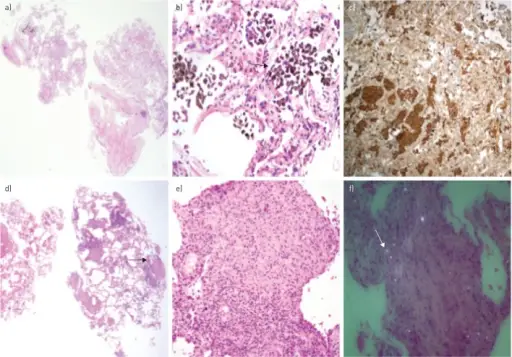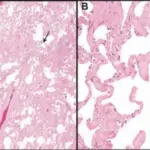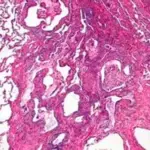Desquamative interstitial pneumonia is a disease characterized by wide alveolar penetration by macrophages shadowed by fibrosis and interstitial inflammation.
What is the Pathology of Desquamative Interstitial Pneumonia?
The pathology of desquamative interstitial pneumonia is:
-Etiology: The cause of desquamative interstitial pneumonia is attributed to smoking.
-Genes involved: None.
-Pathogenesis: The sequence of events that lead to desquamative interstitial pneumonia are: Accumulation of macrophage at the respiratory bronchioles in retort to smoking, these provoke fibrosis and interstitial inflammation in a time-sensitive style.
-Histology: The histology associated with desquamative interstitial pneumonia shows the large accumulation of macrophages with plentiful cytoplasm comprising dusty brown color in the airspaces.
How does Desquamative Interstitial Pneumonia Present?
Patients with Desquamative Interstitial Pneumonia typically affect more males than females by a ratio of 2:1 present at age range of 40 to 50 years. The symptoms, features, and clinical findings associated with desquamative interstitial pneumonia include insidious commencement of dyspnea and dry cough over weeks or months, and clubbing of digits.
How is Desquamative Interstitial Pneumonia Diagnosed?
Desquamative interstitial pneumonia is diagnosed through laboratory studies- CBC count surge in eosinophil and neutrophil count. Imaging studies- Chest x-ray indicates reticulonodular infiltrates at lower lung regions.
How is Desquamative Interstitial Pneumonia Treated?
Desquamative interstitial pneumonia is treated through Medical treatment with steroid therapy and cessation of smoking.
What is the Prognosis of Desquamative Interstitial Pneumonia?
The prognosis of desquamative interstitial pneumonia is good with a brilliant response to treatment.



